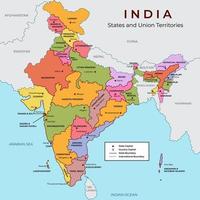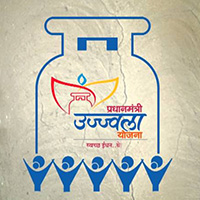
Civil Service Independence Act in India
In India, there is no specific legislation called the “Civil Service Independence Act.” However, the independence and functioning of civil services in India are governed by various provisions, constitutional mandates, and regulations. The main legal framework that ensures the independence of the civil services in India includes:
1. The Constitution of India:
The Indian Constitution lays the foundation for the functioning and independence of civil services. Several provisions under the Constitution ensure the autonomy, protection, and functioning of civil servants in India.
- Article 311: This is one of the key provisions that protects civil servants’ rights. It states that no person employed in civil services shall be dismissed or removed from service by an authority lower than the authority that appointed them (typically, the President or Governor).
- It also provides protection against arbitrary dismissal and ensures that a civil servant cannot be dismissed, removed, or reduced in rank without a proper inquiry or reasonable grounds.
- Article 312: Allows Parliament to create and regulate all-India services, such as the Indian Administrative Service (IAS), Indian Police Service (IPS), and Indian Foreign Service (IFS), which are crucial to maintaining the uniformity and independence of civil services.
- Article 320: Empowered the Union Public Service Commission (UPSC) to conduct examinations and select candidates for civil services and other services under the Union of India, thereby ensuring a merit-based recruitment process for the civil services.
- Article 321: Gives the President of India the authority to extend the functions of the UPSC to other services as well, ensuring that civil servants are selected based on merit and their appointment is protected.
2. All India Services Act, 1951:
This Act is crucial in establishing the foundation for the All India Services (AIS) like the Indian Administrative Service (IAS), Indian Police Service (IPS), and Indian Forest Service (IFS). The Act provides the legal framework for the recruitment, posting, tenure, and discipline of civil servants in these services, ensuring their independence.
3. The Union Public Service Commission (UPSC) Act, 1950:
This Act governs the functioning of the UPSC, which is responsible for the recruitment and selection of candidates for the civil services under the Union of India. The Act ensures the autonomy and independence of the UPSC in carrying out its functions without interference from the government.
4. The Civil Services (Classification, Control, and Appeal) Rules, 1965:
These rules are related to the disciplinary control over civil servants and outline the procedures for actions like suspension, penalties, and appeals, ensuring fair treatment and transparency in the disciplinary process.
5. Protection of Civil Servants:
Civil servants in India are protected from arbitrary dismissal, and their services can only be terminated after a formal inquiry or based on misconduct established through a fair process. This is essential for maintaining the independence of civil servants from political or administrative pressures.
6. The Lokpal and Lokayuktas Act, 2013:
The Lokpal is an anti-corruption ombudsman institution that also deals with complaints related to the conduct of public servants, including civil servants. While not directly related to civil service independence, the Lokpal aims to ensure accountability and transparency, while also offering protection against undue influences on civil servants.
Conclusion:
Although India does not have a “Civil Service Independence Act” per se, several constitutional provisions, acts, and rules work together to ensure the independence, protection, and functioning of the civil services in the country. These provisions provide a robust framework for ensuring that civil servants can carry out their duties impartially, without external pressures, particularly from political influences.
History of Civil Service in India
The history of the civil services in India is rich and evolved over centuries, influenced by different regimes, British colonial administration, and the post-independence period. Here’s an overview of the history of the civil services in India:
1. Ancient and Medieval India
- Ancient India: The concept of civil service can be traced back to ancient India in the form of administrative officers like amatyas (ministers) and senapatis (army commanders), who helped in the governance of various kingdoms. The Mauryan Empire, under Emperor Ashoka, had an efficient administration with officials working in various sectors like revenue, justice, and army.
- Medieval India: During the Mughal Empire, civil services were integral to governance. The Mughal bureaucracy was highly structured, with high-ranking officials like diwans (finance ministers), kotwals (police commissioners), and nazirs (revenue officers). The Mughal emperor Akbar established a strong administrative framework with a mix of military and civil officers.
2. British Colonial Era
- East India Company Period: British civil services began with the formation of the East India Company, which initially handled administrative functions in India. Company officials were involved in governance, tax collection, and legal matters.
- The Bengal Civil Service (B.C.S.): In 1806, the British established the Bengal Civil Service, which became the foundation for the Indian Civil Services (ICS). This was the beginning of the modern civil services in India. It was initially open only to British nationals, but later, Indians were also allowed to participate (though they faced significant barriers).
- Indian Civil Services (ICS): The ICS became the backbone of British rule in India. It was responsible for implementing colonial policies, tax collection, and maintaining law and order. The ICS was composed primarily of British officers, but over time, a small number of Indians began to join through competitive exams. The Civil Services Examination was first held in 1855, and it was initially conducted in London. Indian candidates were not allowed to take the exam in India until 1864.
3. Post-Independence Era
- Indian Administrative Service (IAS): After India gained independence in 1947, the Indian Civil Services were reorganized. The Indian Civil Services Act of 1919 was replaced by the Indian Administrative Service (IAS) and the Indian Police Service (IPS). These became the top administrative services in India, ensuring continuity in governance.
- The Constitution of India (1950): The Indian Constitution created a framework for the Indian Civil Services. The Article 312 of the Constitution provided for the establishment of All India Services (IAS, IPS, and IFS). The Union Public Service Commission (UPSC), which had been established in 1926, was empowered to conduct exams and select candidates for these services.
- Independence of Civil Servants: The Constitution ensured that civil servants enjoyed security of tenure, and they could not be dismissed without a proper inquiry, protecting them from political interference. Article 311 of the Constitution guaranteed that civil servants could not be dismissed or reduced in rank except after a formal disciplinary process.
4. Reforms and Modernization
- Post-Independence Reforms: After independence, the government undertook various reforms to streamline the recruitment and functioning of civil services. The introduction of new procedures, rules, and training programs helped in improving the overall effectiveness of the civil services.
- The All India Services Act, 1951: This act established the IAS, IPS, and IFS as permanent services under the central government, ensuring the establishment of a unified civil service system across India.
- The National Training Policy, 2012: This policy introduced reforms in civil service training, focusing on improving the quality of governance by emphasizing the training of civil servants in various fields like policy making, governance, and crisis management.
5. Current Civil Service Structure
- All India Services: These services include Indian Administrative Service (IAS), Indian Police Service (IPS), and Indian Foreign Service (IFS). These services are intended to serve the Union and State governments and are managed by the UPSC.
- Central Civil Services: These include services like the Indian Revenue Service (IRS), Indian Audit and Accounts Service (IAAS), and the Indian Railway Traffic Service (IRTS), among others. Civil servants in these services are recruited by the UPSC or the respective recruitment boards.
- State Civil Services: Each state in India also has its own civil services, including the State Administrative Service and State Police Service, which are recruited by respective State Public Service Commissions (SPSCs).
6. Civil Services in Modern India
- Reforms: In the modern era, there have been various reforms aimed at improving the efficiency and accountability of civil servants. The Second Administrative Reforms Commission (2005-2009) made several recommendations to modernize the civil services, including enhancing transparency, ensuring greater political neutrality, and improving governance.
- Digitalization and E-Governance: With the rise of technology, civil services have become more integrated with digital tools for e-governance, data management, and online citizen services. Initiatives like Digital India and Make in India have aimed at improving the effectiveness and efficiency of the bureaucracy.
Conclusion
The history of civil services in India reflects a gradual evolution from traditional systems of administration to a modern, competitive, and professional structure, influenced by both indigenous practices and British colonial models. Today, the Indian Civil Services remain a pillar of governance, helping to administer policies, maintain law and order, and ensure the effective delivery of public services across the country.
FAQ
The civil service in India was restructured after independence to serve the democratic Constitution of India. The civil service was made more focused on public welfare, economic development, and nation-building.
2. How did the civil service change after independence?
- The Indian Administrative Service (IAS) and other central services replaced the colonial-era Indian Civil Service (ICS).
- The civil service was reorganized into three types: All India Services, Central Services, and State Services.
- The civil service became the backbone of the administrative machinery, ensuring the implementation of policies and maintenance of law and order.
- Civil servants are responsible for implementing flagship schemes like Mahatma Gandhi National Rural Employment Guarantee Act (MGNREGA) and Pradhan Mantri Awas Yojana (PMAY).
3. Who advocated for the All India Services?
- Sardar Vallabhbhai Patel, often regarded as the Father of Indian Civil Services in Independent India, strongly advocated for retaining the All India Services.
- Article 312 of the Constitution empowered Parliament to create All India Services.
4. What is the role of civil servants?
- Civil servants ensure continuity in governance even when elected governments change.
Key Terms:
- administrative officers ,
- administrative reforms India ,
- All India Services ,
- All India Services Act 1951 ,
- Article 311 ,
- Article 312 ,
- Bengal Civil Service ,
- British colonial administration ,
- British colonial bureaucracy ,
- Civil service history India ,
- civil service modernization ,
- civil service recruitment ,
- civil service reforms India ,
- Civil Services Examination ,
- Digital India ,
- e-governance ,
- East India Company ,
- ICS reforms ,
- Indian Administrative Service (IAS) ,
- Indian Civil Service (ICS) ,
- Indian Civil Services ,
- Indian Constitution ,
- Indian Foreign Service (IFS) ,
- Indian Police Service (IPS) ,
- Mauryan Empire governance ,
- Mughal Empire administration ,
- national training policy ,
- post-independence bureaucracy ,
- public service delivery ,
- second administrative reforms commission ,
- security of tenure ,
- Union Public Service Commission (UPSC)
Disclaimer: The information provided here has been compiled from various sources to the best of our knowledge. While every effort has been made to ensure the accuracy of the details, there may be occasional errors or omissions. If you find any discrepancies or incorrect information, kindly inform us so we can make the necessary corrections. Thank you for your understanding and cooperation.





